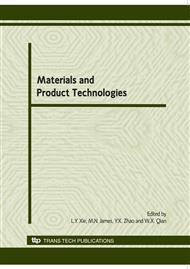p.80
p.90
p.95
p.100
p.105
p.111
p.116
p.121
p.126
Modeling to the Fatigue Crack Growth Rates of the Cast Steel for Chinese Railway Rolling Wagon Bogie Frames
Abstract:
Compact tensional specimens are fatigued for modeling the fatigue crack growth rates of the cast steel for Chinese railway rolling wagon bogie frames. Typical fracture surface observations indicate that the fatigue cracks grew with distinct fatigue striations, river-like flowers, and second cracks in perpendicular to the fatigue crack path. Lots of dimples appeared in the transient fracture district to indicate that present material is ductile. Similar to the previous NASGRO’s exploration, a full modeling is proposed from fatigue cracking threshold to the transient fracture corresponding to the material fracture roughness. Availability has been verified to be applied for the present material. In addition, this modeling is very simple that the modeling can be performed by the conventional tests of fatigue cracking thresholds, growth rates, and fracture roughness values.
Info:
Periodical:
Pages:
105-110
Citation:
Online since:
June 2010
Authors:
Keywords:
Price:
Сopyright:
© 2010 Trans Tech Publications Ltd. All Rights Reserved
Share:
Citation:


